 5
5
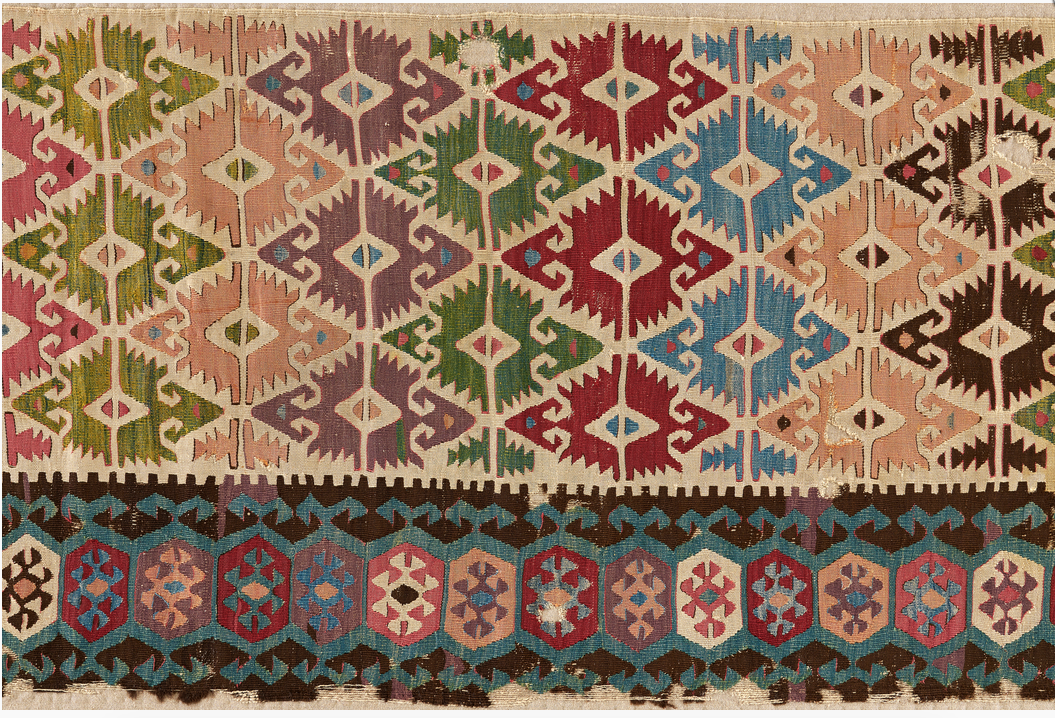
Kilim (detail), Central Anatolia, late 18th century. The Textile Museum 2013.2.1. The Megalli Collection. Courtesy of the George Washington University Museum and The Textile Museum.
At first glance, you might ask yourself why are we sharing an exhibit featuring antique Kilims of Anatolia currently on exhbit at the George Washington University Museum and The Textile Museum and how does this affect me as a quilter? Design, color and pattern can be found in every aspect of our life, even in the carpet under our feet. Art in all its forms, no matter how humble can inspire and translate into our own personal quilt work.
And while 19th century carpets from a region across the globe may not make your heart flutter, you might be surprised to find works in a more familiar textile do make you giddy with delight. But more on that in a moment. Let's focus on what is a kilim. A kilim is a flat weave carpet woven with fibers (sheep, goat, horse or camel) that were hand-spun, hand-dyed with vegetable dyes and many months of laborious work to create just one piece.


Kilims were "woven by women to adorn tents and camel caravans, kilims are enduring records of life in Turkey’s nomadic communities, as well as stunning examples of abstract art." Kilims were also used as doorflaps, food coverings, as cloths for eating and prayer rugs. And while these woven items were considered functional and utilitarian in the nomadic household, in the event of a need, would be bartered or exchanged for currency after all other 'sellable' items had been exhausted. Like a quilt that took the maker many months or years to construct, parting with it could be painful. These were cherished works.

Kilim (detail), Central Anatolia, possibly east-central, mid-19th century. The Textile Museum 2013.2.19. Courtesy of the George Washington University Museum and The Textile Museum.
This colorful and graphically interesting Kilim, dating from the mid-19th century, with its rows of diamonds undulating along the entire length might remind you of some quilt patterns. The weaver's use of several colors with one pattern is stunningly beautiful. The two quilts below are a perfect example. During week 36 and week 37 of our 2017 Design to Quilt Program we focused on the visual impact a single design motif can make.
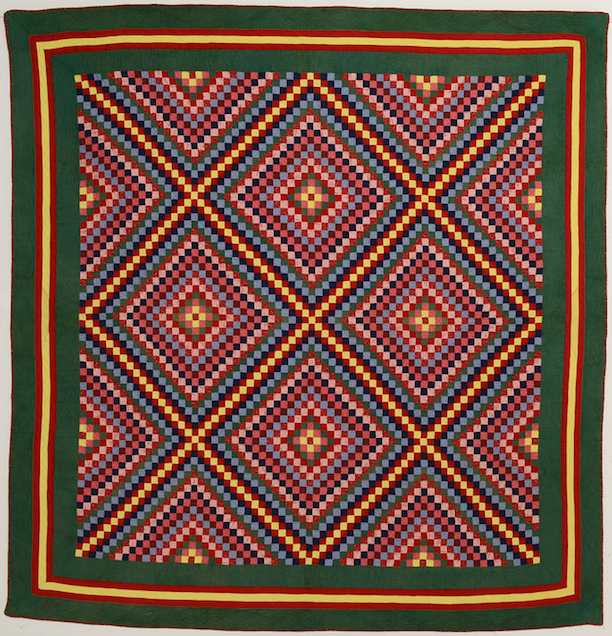
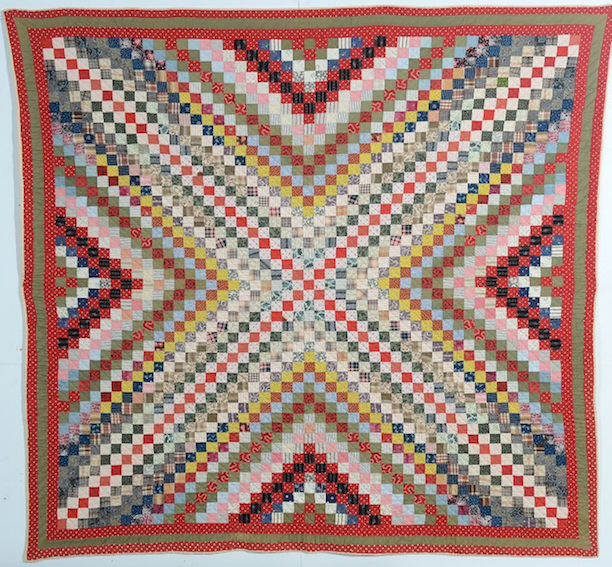
Philadelphia Pavement Quilt. Circa 1880. Pennsylvania. Postage Stamp Quilt. Circa 1890. Pennsylvania Stella Rubin Antiques.
Does this weaver's Kilim, made circa 1800-1850, not inspire you with her selection of colors, pattern and design layout? Don't dwell on the fact that it is a rug; focus on the repeated pattern using a minimal color selection. Could these colors inspire when selecting fabrics for your next quilt?

Kilim, Central Anatolia, ca. 1800-1850. The Textile Museum 2013.2.47. The Megalli Collection. Courtesy of the George Washington University Museum and The Textile Museum.
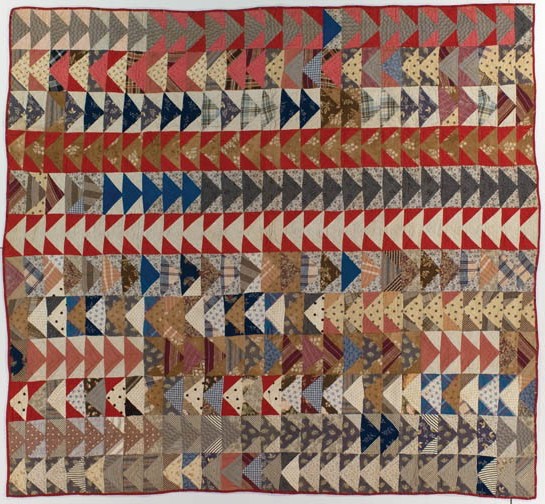
Wild Goose Chase, believed to have been made in Pennsylvania during the years of 1880-1910, is a fine example of a quilt featuring similar colors to the Kilim above. Do you see where the idea of viewing other forms of art can inspire you as a quilter? Be open to and embrace inspiration where ever you find it.
While you may not be able to view this show in person, be sure to take advantage of the images that are available through the museum. Or better yet, purchase the catalog as a resource that contains a wealth of historic information, images and descriptions for your future artwork.
A Nomad's Art: Kilims of Anatolia. On view at George Washington University Museum and The Textile Museum.The exhibition runs through December 23, 2018.
Wild Goose Chase. Maker unknown. Possibly made in Pennsylvania. Circa 1890-1910. Jonathan Holstein Collection. 2003.003.0136. Courtesy of the International Quilt Study Center and Museum.
Shoes?
When reviewing the story we found this website. We are not associated with them and do not receive anything from them. This is just an interesting FYI.





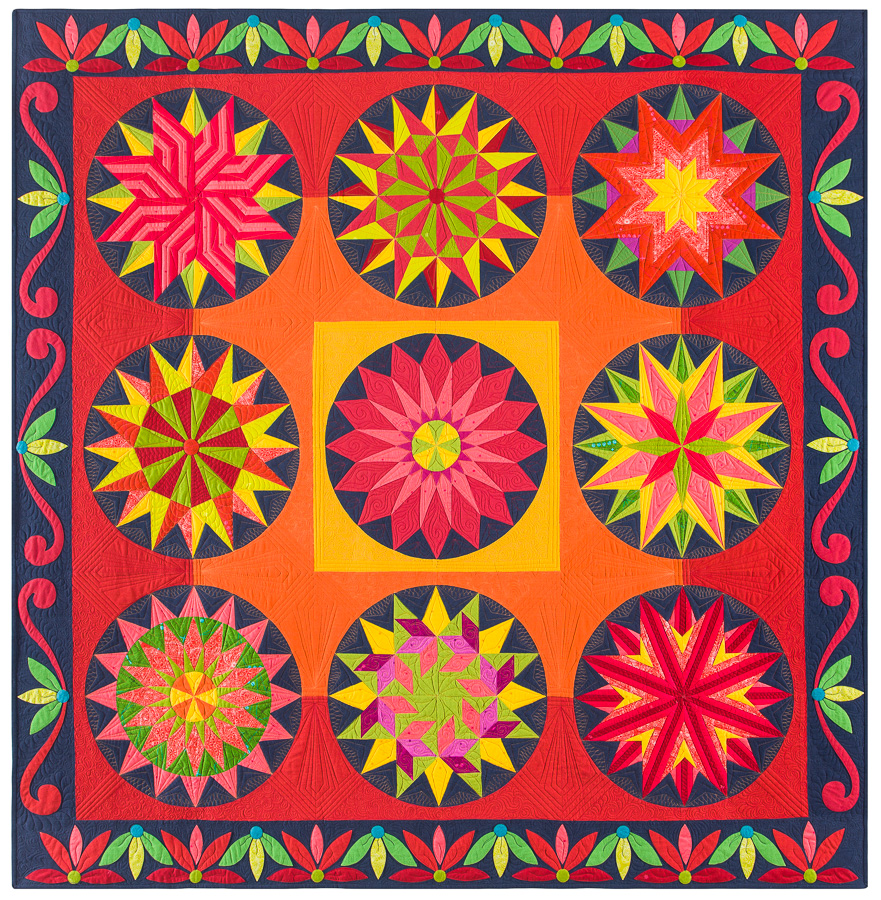
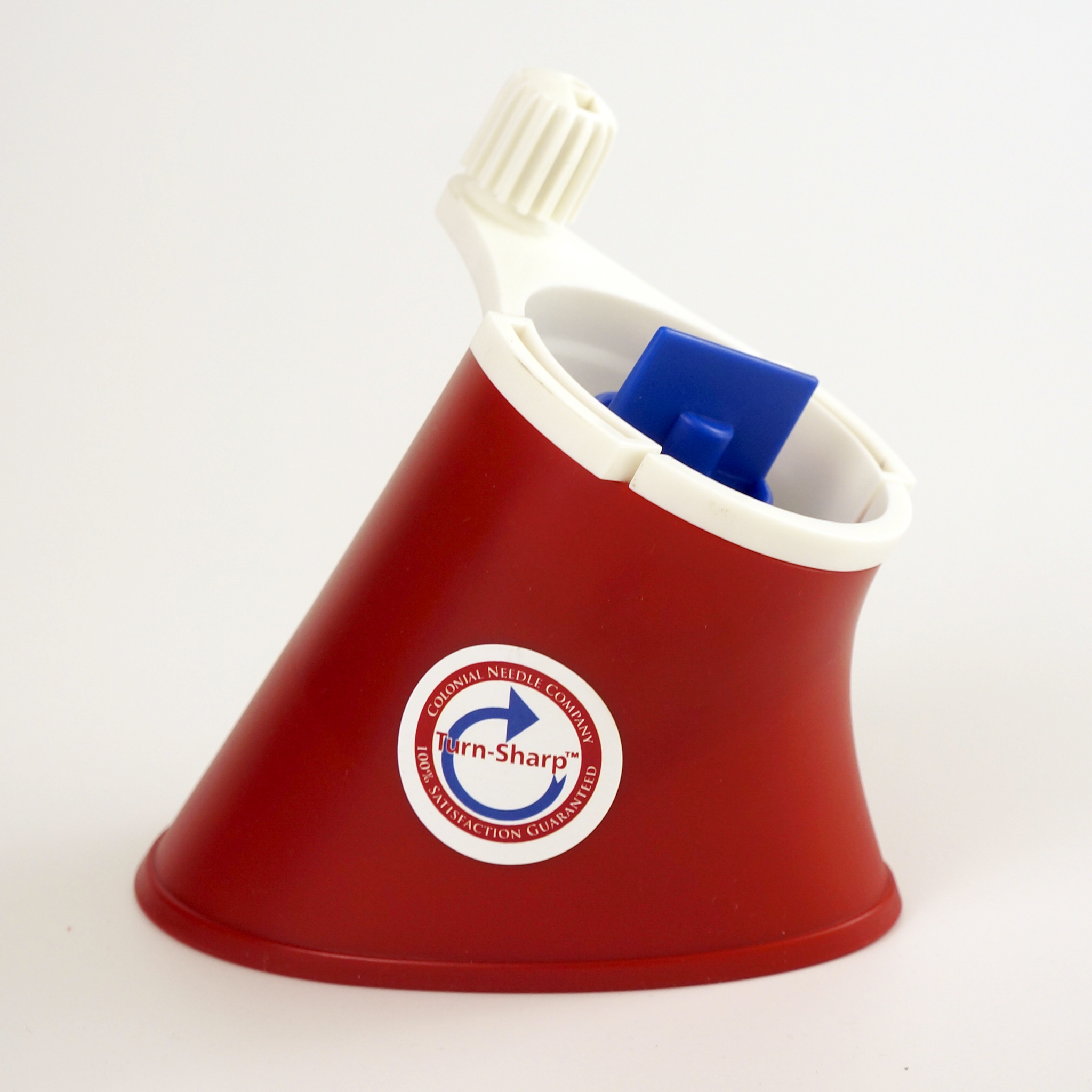










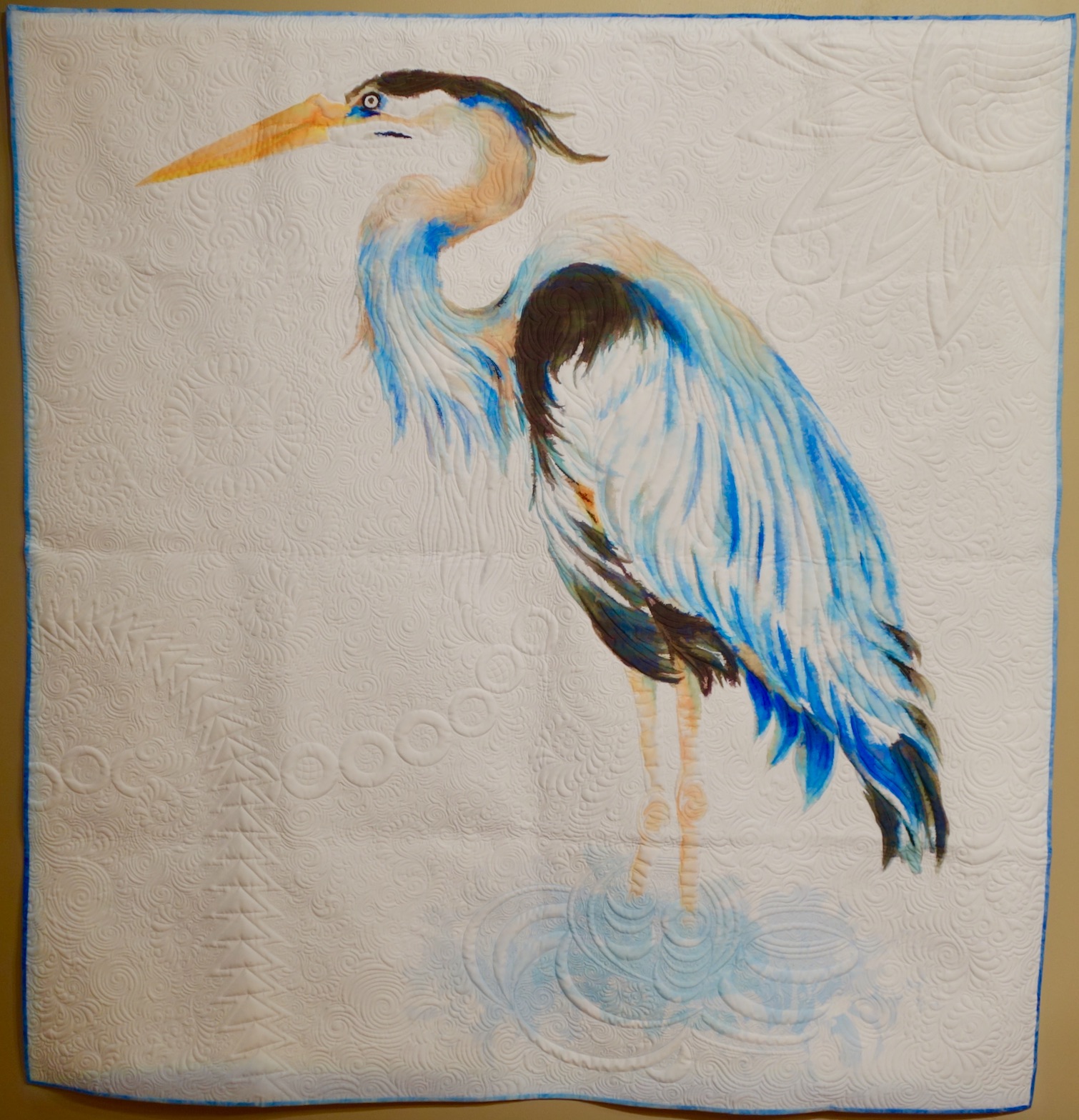

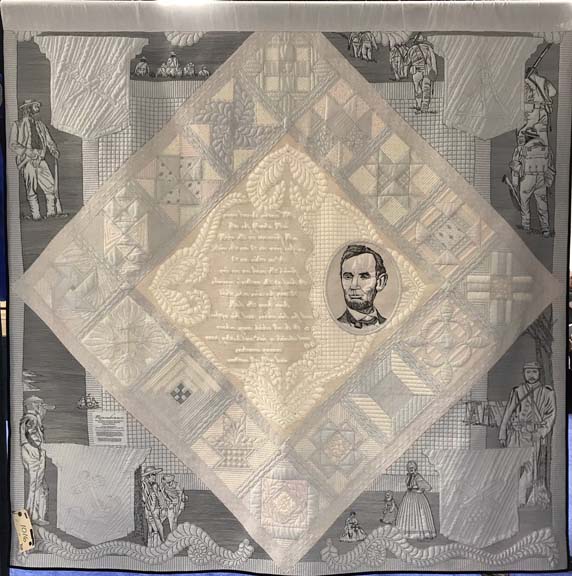


.jpg)


